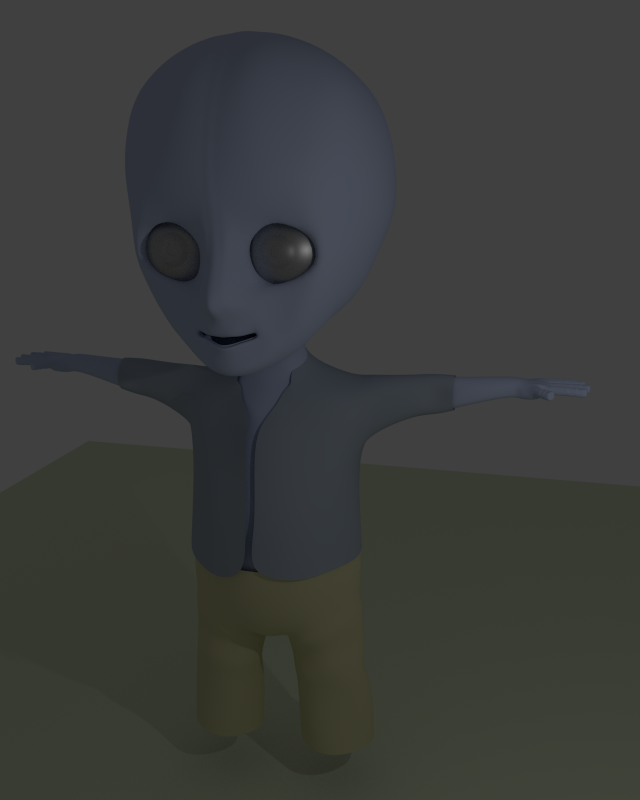Almost 6 months ago I started drawing vector graphics with Inkscape. From time to time I wanted 3D graphics, and poked perspective drawing from the beginning, but didn't want to switch to 3D modeling; perhaps the two primary reasons were its apparent complexity, and poor 3D models which I have been recalling. But turns out that it is pretty simple (in the beginning, at least), and 3D models can be rather nice: though photorealistic human portraits are indeed uncommon (yet they exist), all kinds of landscapes and cartoons can be composed with it. Just as with 2D vector graphics — and as one may expect — cartoons seem to be particularly easy to draw.
A nice thing about 3D modeling is that you don't work on an illusion of depth, but simply draw in depth, and can reuse those models to render them from different points of view, and to adjust their positions after rendering the basic one. There also is light, and materials, and all kinds of things are [semi-]automated.
Here is a newbie (my) drawing for inspiration, which one can draw with a Blender Character Modeling video tutorial – in a day or two, without prior familiarity with Blender (or 3D modeling in general):

And there is DeviantArt/digital/3D for more inspiration, showing what one can draw after gaining some practice. One can even make an RMS model with it, and use it in a FSF-themed action game!
3D modeling seems to be among the few things where video tutorials are actually helpful: there is no folks waving their hands while transmitting the information that is easier to write and read – they usually exhibit the process that is full of graphics.
Blender GUI may be confusing at the beginning, so it might be worthwhile to check some GUI-oriented tutorials. Though many parts of it can be picked from beginner tutorials as well.
There are video tutorials on youtube; I've started with a coffee cup, and Blender Character Modeling was the second one, followed by a wooden cup to try textures, and basics of animation (which cover bones). Going to check an eye tutorial next.
A reference manual also exists, but it's probably not the most fun way to learn. The good thing about drawing practice is that it's both fun and a big part of the learning process – so a big part of the learning process is fun. Although one may find fun in many things, it is rather hard to enjoy learning GUI.
Somewhere between the first two video tutorials, I have read the Blender 3D: Noob to Pro book's first unit: no drawing there, but it explains the GUI basics, and even explains what a numpad is. I don't have a numpad, by the way, and it wasn't a problem by now; there is an emulation mode. Though some keys don't get emulated, and not sure whether it's possible to redefine them (I hope it is), occasionally using a mouse is not the end of the world – especially when it comes to graphics editing.
Another unpleasant detail is Python; though I didn't need it yet, apparently it's used in Blender for game scripting. Maybe I won't need it at all, and it's also not that bad.
For drawing models from scratch, one may use front, side, and possibly top/bottom drawings or photos; it might be easier to draw them in 2D first, and just then use Blender for 3D modeling. Textures would also require some 2D art.
And, as it is with many other things, the corresponding Freenode/Libera.chat channel (#blender) is pretty helpful.
MORSE is a nice robotics simulator making use of Blender and the Bullet physics engine.